Danger: Novelist at work
Notes on the construction of the psychological thriller "Mountain of Devils"
Intro
It’s January 19, 2025, one day before the installation of the cabal of techbros, Christianist crazies, thugs, billionaires and sundry other fascists into the halls of USian power. For the last several months I’ve mostly been posting on here about my dread of such people and such developments, and also about some challenging health situations faced by members of my family & how they’ve been wearing me down. I’ve got to get back to some of my more fun topics or I’m going to lose my damn mind. So today I’m writing about my chaotic way of being, by some definition of the term, a novelist. Today’s is an existential-dread-free post.
Welcome, new readers
Sundman figures it out! is an autobiographical meditation, in the spirit of Michel de Montaigne, of a 71 72 year old guy who lives with his wife in a falling-down house on a dirt road on Martha’s Vineyard that dead-ends into a nature preserve.
Incidents, preoccupations, themes and hobbyhorses appear, fade, reappear and ramify at irregular intervals. If you like this essay, I suggest checking out a few from the archives. These things are all interconnected.
Précis
My most recent work of book-length fiction is the hackertastic nano/bio/cyperpunk novel Biodigital, which I published in 2014. For those of you who’ve misplaced your calculators, that’s eleven years ago. Since then I’ve been (allegedly?) working in the most desultory, on-again/off-again way, on novel that’s a prequel to Biodigital, called Mountain of Devils. Why the hell is it taking me so goddamn fricking long to finish it?
If a first-person account of one man’s struggle to birth a novel that’s been gestating in his noodle for well more than a decade sounds interesting to you, read on. If not, then cheerio, and I hope you’ll take a look at some of my other offerings, whether now or some other time.
Writing a novel is serious business
Let me explain something to you, Walsh. This business requires a certain amount of finesse.1 You don’t just roll out of bed one sunny morning and say, “Oh, I think I’ll write Anna Karenina today.” No, no, no, no, no. You must study first. Do you think Jesuits get ordained on the day they walk into the seminary? It ain’t like that. Try ‘seven years of study’ first. That’s what Jesuits call their formation. Seven years (and sometimes longer) to get from Mister Bojangles to Father Bojangles. And becoming a Jesuit is nothing compared to becoming a novelist.
You say you still want to become a novelist? Well then, allow me to suggest some preparatory reading. But don’t say I didn’t warn you.

My friend Kellnerin, a longtime SFIO! subscriber and the masterful editor of my illustrated dystopian phantasmagoric novella The Pains, may note that there is one book on the bookshelf in the above photo that doesn’t belong there: Tom Engelhart’s The Last Days of Publishing, a novel about an editor in a commodifying world that no longer even wants great books because there’s more money to be made in books that are merely good enough. She lent me The Last Days of Publishing about fifteen years ago.
Kellnerin isn’t her given name, by the way. That’s a nickname, a handle. It means ‘waitress’ in German. I know Kellnerin’s still a subscriber to Sundman figures it out!, but does she ever read these essays? Who knows? What I can tell you is that she never ‘likes’ them or leaves a comment. Like so many of my readers who read, but never ‘like’ or comment. Et tu, lector?
Hey Kellnerin! If you’re reading this and would like your book back, please tell me where to mail it. I think it’s time for me to return it, don’t you? Where the heck are you these days? Still someplace near Boston, I think?
Swinging for the fences
Like Rick Koppes, the editor at the fictitious Byzantium Press who is the protagonist of The Last Days of Publishing, I, with Mountain of Devils, am attempting to create a novel that is not merely good enough or even very good, but great. I’m talking Moby Dick, War and Peace, Haunting of Hill House, At Swim Two Birds great. Great, like Call it Sleep or Wide Sargasso Sea. Or Ralph Ellison’s Invisible Man. Those are some of the titles on my list of great novels. But that’s just my list; your list is probably different.2 When you hear me say that Mountain of Devils is going to be ‘great,’ your brain should start going through your own personal, idiosyncratic great novels inventory. Perhaps your list includes The Life and Opinions of Tristram Shandy, Gentleman. I mean, is there any reason it wouldn’t?
None of of the four books that I’ve written and published is great, although Cheap Complex Devices , my metafictiony novella about the apocryphal ‘Hofstadter Prize for Machine-Written Narrative,’ which I published in 2002, anticipating ChatGPT and all the questions it raises by more than twenty years, comes pretty damn close. Sometimes I think it really is great. One reviewer said, and I quote, “Cheap Complex Devices is like Douglas Hofstadter’s Gödel, Escher, Bach as told by Philip K. Dick on acid.” You go try writing a novel that will be worthy of higher praise than that, milord.
[If you’re a Hofstadter fan, please at least take a look at my SFIO! essay Gödel, Escher, Bach and me, and me, which chronicles some of my personal interactions with Douglas Hofstadter over the last 45 years or so. If you’re a real Hofstadtertarian I guarantee you’ll love it.]
You may have seen this (below) clip featuring the novelist Nicole Galland, co-author with Neal Stephenson of the time-travel romp The Rise and Fall of D.O.D.O., talking about Cheap Complex Devices, taken from the end of my hour-long interview with her about her process as a novelist? Even if you have seen it, watch it again! It’s only 44 seconds, and besides, Nicki’s a babe!
Transcript:
Galland: I loved it. I loved Cheap Complex Devices. I loved the the combination of — it was sly, it was like the humor of it was sly. It had so much soul to it, and it was so beautifully written. And it was smart, and it did all — it it's such a tiny little book! And there's so much in there! Like, you got in there as many original thoughts as Neal Stephenson can get into a much bigger book. I mean I just it just blew me away how original a thinker you were, and how succinct you were in the originality. And there was just so much heart to it.
Me: I love you.
I met Galland about 15 years ago at the Trade Winds airstrip on Martha’s Vineyard. The airstrip is not paved, it’s just a long cross of grass runways, and only seldom used by airplanes. In those days, before it was fenced off, Trade Winds was mostly used as a place to let dogs run freely. It was dusk, there was snow on the ground, Nicki and I were the only two people left at the dog park, and my dog, a black lab named Janou, who was kind of a jerk sometimes, had run off into the woods. Is that a frickin’ meet-cute or what. But don’t worry, there were no rom-com developments. Life is not always soap opera.
Swinging for the fences, continued
So anyway, I see no reason to not come right out and say it: with Mountain of Devils I’m singing swinging for the fences, aiming for greatness. I am aware that setting such a lofty goal for yourself is an invitation to perfectionism and that with perfectionism comes procrastination and that I am a procrastinator. Shut up.
One reason that I want to write & publish a great novel is that I think that that’s the only way I’ll ever make any money in this biz.
Another reason is that I believe (which, see comments by Ralph Ellison, author of Invisible Man, below) that great literature is necessary for civilization to survive, especially in times of great civilizational peril, and that we are in, on the eve of what many people hope to make the Reich of Trump, such a time of great peril, so therefore I have an obligation to produce great literature if I can figure out how to do it.
A third reason is so that I can say, once I have done it, ‘There, I did it. I wrote a great novel.’ I think that that will give me much satisfaction.
The Pains: not ‘great,’ maybe, but still pretty damn good

Set in a world called ‘Freemerica,’ which is a mashup of Ronald Reagan’s (actual?) 1984 and George Orwell’s fictional 1984, The Pains is a fable about an unholy cabal of transhumanist techbros like Peter Thiel and fascist theocrats like Speaker of the House Mike Johnson who join forces to subvert democracy.
I wrote and published The Pains in 2008. But yet it’s about Trump, Musk, Mike Johnson, Amy Coney Barrett and Clarence Thomas. Am I clairvoyant? No. Of course not. Well, maybe a little. I mean, my books have been, actually eerily prescient. Shut up.
The Pains tells the story of Mr. Norman Lux, a disintegrating man in a disintegrating world. He’s a Freduit, a novice in the ‘Society of Fred’ — named for Fred, believed by some Freemericans to be The Deity incarnate — Fred, who was hanged in the noose, the Holy Noose, or in Latin, Santa Soga.
The Unavoidableness of Self-Consciousness
E.M. Forster’s great book Aspects of the Novel(1927) which began as a series of lectures, has these chapters: The Story; People; People (continued); The Plot; Fantasy; Prophecy; Pattern and Rhythm, Conclusion. I like Aspects of the Novel a lot but I find that the stuff Forster writes about fantasy & prophecy — that is, how novelists get us to go along with stories that pretend to be about the real world but which are actually operating in the realm of myth — Moby Dick being one case in point — is pretty stilted & old fashioned.
But speaking of stories that pretend to be about the real world but which are actually operating in the realm of myth, I wonder what Forster would have made of Thomas Pynchon’s Gravity’s Rainbow? I expect he would have hated it. (Maybe you do too! Lots of people hate Gravity’s Rainbow! I love Gravity’s Rainbow; I think it’s a truly great novel, even though I don’t know what it’s talking about half the time.)
As much as I like Forster’s Aspects of the Novel, if I could only take it or Robert Alter’s Partial Magic: The Novel as a Self-Conscious Genre with me to a proverbial deserted isle, I would choose Partial Magic.
The overriding concern of the novel, according to Alter, is ‘the disparity between the structures of the imagination and things as they are.’ This is a very important point but we don’t have room to go into it here and now. But you should definitely think about it.
MoD’s Plot: Beginnings and questions
You remember, perhaps, that old saw about the difference between ‘story’ and ‘plot’: “Story is ‘the king died, and then the queen died. Plot is, ‘the king died and then the queen died. Of grief.’” Basically that’s all you need to know so now let’s talk about the plot of Mountain of Devils.
No, my bad. Let’s start with Acts of the Apostles.
My first novel, Acts of the Apostles, which I published in late 1999 after endless revisions, is the story of the Silicon Valley evil genius Monty Meekman and the cult of brilliant but socially inept techbros — the ‘Fellows’ of Digital Microsystems — who venerate him — you can imagine the Fellows as younger versions of today’s familiar cartoonish creepy brilliant socially inept techbros seeking world domination, people with names like Musk, Thiel and Andreesen — and of their dastardly plan for world domination, and of the plucky band of misfits, led by bunt-out 30-something software engineer Nick Aubrey, who attempt to thwart Meekman and his group of brilliant, but brainwashed, followers.
Among the secondary characters in Acts are Bartlett (née McGovern) Aubrey, Nick’s estranged molecular-biologist wife; Pavel Isaacs, an enigmatic Meekman follower who is equally skilled in biology and computer science, and Judith Knight, a biologist with a strong interest in bioethics and biosecurity.
Nick and Bartlett are white, Judith is Black, and Pavel seems to be undergoing some kind of weird metamorphosis from Black to white. This matters for plot reasons we needn’t go into here. All of the characters are American. So that’s Acts of the Apostles. We’ll get to Biodigital in just a bit.
Biodigital is a thoroughly reimagined telling of the same basic story as Acts of the Apostles.3
The Pains is best experienced in the first, printed-on-glossy-stock, edition
By the way, the best way to experience The Pains, so wonderfully edited by my friend Kellnerin who no longer deigns to acknowledge my existence, I don’t know why, is not in the ebook version or the print-on-demand version you can get from Amazon (with the cool cover by Mark Gibbs) which are both fine, but in the first edition, printed on high quality glossy stock, which is available for purchase directly from me. Hit me up in email if you’re interested.
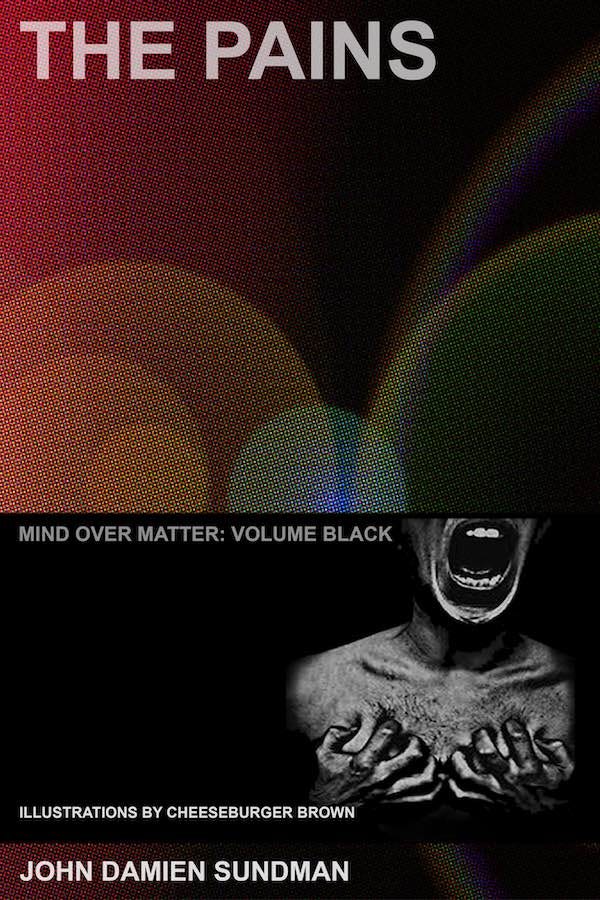
In these little digressions on The Pains & so forth in a post ostensibly about a novel called Mountain of Devils I am showing you the art of novelist’s procrastination, of avoiding writing the thing you promised yourself that you would, without fail, write about.
People; People (continued)
In Acts of the Apostles we learn, almost in passing, that long before Nick and Bartlett met and married, Bartlett had had some kind of traumatic encounter with Monty Meekman — a fact she had never disclosed to Nick.
In Biodigital the character ‘Bartlett’ is much more fully developed than she is in Acts.
In reading Biodigital we get more of an understanding of how witnessing — starting when Bartlett was just 12 years old — the suffering and death of her younger brother Jerome, from an incurable neurodegenerative disease, was what led her to become a scientist.
And we also learn that Bartlett’s long ago encounter with Monty Meekman, whatever it was, also involved Pavel Isaacs and Judith Knight — two relatively minor characters in Acts of the Apostles.
Thus, as far back as 2012 or so, when I was deep into the process of transmuting Acts to Biodigital, I began to wonder: What exactly did occur between Bartlett and Monty Meekman (and Pavel and Judith)?? When did it happen? Where did it happen? And how in the heck had Bartlett managed to never tell the story of her personal history with Monty to Nick, whom she clearly loved?
And why? Why, why, why? Why had Bartlett concealed this vital information from her husband, when sharing it might have spared him years of torment?
Mountain of Devils is the book I am writing to answer these questions. That’s the plot.
Do you agree with Ralph Elison? I do, but not everybody does
From the essay Teaching Ellison by Annie Abrams in Liberties magazine:
In 1955, The American Scholar published a discussion among influential writers and editors titled “What’s Wrong with the American Novel.” In the symposium Ralph Ellison remarked that “I just feel that we are called upon to do a big job, not because someone is going to give us a star on the report card, but because this is America and our task is to explore it, create it by describing it.” His conviction came from his success in communicating a creative vision for self-determination in his novel Invisible Man three years earlier. From experience, he knew that writing into a conversation about the nation’s identity could change the ways other people understood their lives and commitments.
Contra Abrams and Ellison, former NFL tight end and current WEEI sports talk radio personality Jermaine ‘Wiggy’ Wiggins said this during The Greg Hill Show broadcast last Thursday:
People who read never shut up about the books they’re reading. ‘I read this book; I read that book.’ That’s fine for them but I just wish they’d shut up about it. I can read maybe one page of a book; that’s it. Then I get bored.
One crazy month in 1975
The era of genetic engineering, of what we now call ‘synthetic biology,’ and the era self-taught computer hackers — the world of ‘white hats’ and ‘black hats’ and DEF CON — two of the main forces that define the world in which we all now live — began between mid-January and early February, 1975.
The reality of genetic engineering — the purposeful human manipulation of DNA molecules — emerged from a few dozen molecular biology laboratories scattered around the globe and into public consciousness with the Asilomar Conference on Recombinant DNA, which took place in California in February, 1975.
Just one month earlier, in January, 1975, the cover of Popular Electronics magazine featured introduced the Altair 8800, a kit sold by a tiny New Mexico company called MITS, that hobbyists could use to build their own computers. This event is widely regarded as the beginning not only of the era of personal computing, but of computer hacking in the sense it’s used today.
You want to know what else was going on in in January and February, 1975, when, as I’ve explained elsewhere in this chronicle, the universe was still in flux?
Well, for one thing, a shy Purdue undergraduate who was pursuing a degree in food science took LSD and changed her major, embarking on the Frodo-Bagginsian journey that would result in her becoming the legendary and oft-mentioned Molecular Biologist with the Great Figure familiar to long-time readers of these essays, so called; I, your humble chronicler, was sitting in a mud hut in a small village in valley of the Senegal River during a time of famine, pestilence and drought; and two young women named Anne and Jane — yes, the very Anne and Jane introduced to Sundman figures it out! readers in the incredible Jerrycans full of gasoline in the back seat saga — were — this is really true — working as chambermaids — chambermaids, I say, in matching adorable chambermaid outfits — at the very Asilomar Conference Center at which the legendary, epochal, Asilomar Conference on Recombinant DNA took place.
And if you think that any of those things somehow do not make their way into Mountain of Devils, all I can say is that you’re widely off the mark.
Research
I asked the principal of Tisbury School to introduce me to some 6th grade kids to be my story consultants & met with them in his office. I read Antonia White’s Frost in May, an exquisite novel about a nine year old girl who grows into a 14 year old woman. I read it four times. And Judy Blume’s Are you there, God? It’s me, Margaret, of course. I bought ancient science textbooks and Playboy and Tiger Beat magazines.
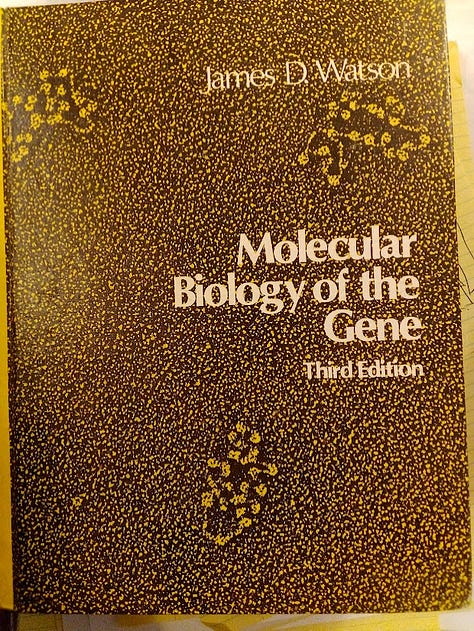

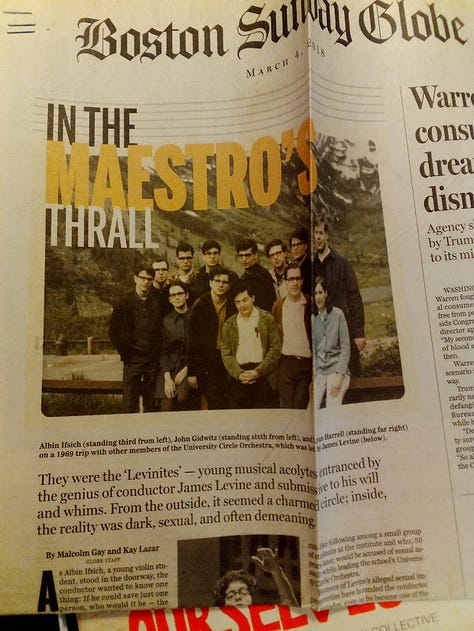
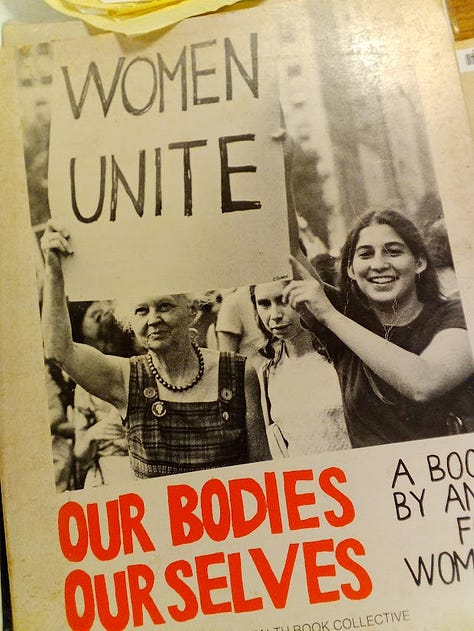

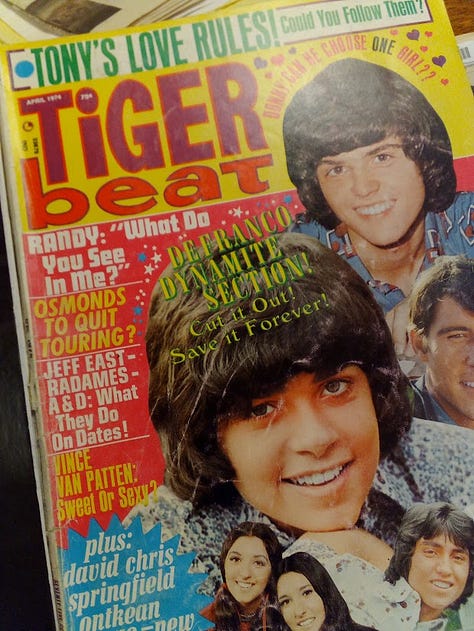
I interviewed Nobel Laureate Paul Berg about the Asilomar Conference on Recombinant DNA, which he inaugurated and chaired.
I read articles and books on cults and charismatic leaders and narcissists and self-anointed messiahs. I listened to 70’s music, from jazz to rock to schlock. I read Frost in May again. I bought a copy of the 70’s feminist classic Our Bodies Ourselves, and Mary William’s The Lost Daughter, about growing up poor in the Black Panther movement in Oakland and somehow ending up Jane Fonda’s adopted daughter. I read Phil Lapsley’s great book Exploding the Phone about phone phreaks, twice, then spoke with him over the magical internet for nearly two hours. I spent nearly three hours in a North Cambridge delicatessen talking about molecular biology in general and the Asilomar Conference in particular with Victor McElheny, the science reporter for the New York Times, whose front-page reporting on the conference caused a virtual earthquake around the world; I spent days in the archives of the library of the Massachusetts Institute of Technology reading transcripts of the oral history of more than 20 Asilomar Conference participants. I read the several dozen letters written to me over the years of our adolescence by my childhood best friend Albert, murdered in Atlantic City long, long ago.
But what about actually writing the book?
Well you look at that. I’ve written all this stuff and I haven’t even gotten to anything about the actual writing of Mountain of Devils, the millions of decisions about points of view and voice and what to leave in and what to leave out and pacing and conflicts and ‘scene and sequel’ and all that stuff, which, were Jermaine Wiggins try to read it, he might actually die of boredom. And that would certainly toss a monkey wrench into the Greg Hill Show on WEEI.
But oh well. Will you look at the time! I must stop now, real work has been calling me for some time now.
Cheerio!
A line from the great movie ‘Chinatown,’ screenplay by Robert Towne.
unless you cribbed yours from the same website from which I cribbed mine
This post explains why I undertook the Acts to Biodigital rewrite. Short version: $$$.





One book of advice about writing I liked was Stephen King: On Writing. He suggests locking the door, unplugging the phone and turning up the music. When you get stuck, he recommends going for a walk with a notebook in hand, so that if an idea comes, you can write it down on the spot. One day he took his own advice, went for a walk along a country road (no sidewalk), and got hit by a car. Laid up in the hospital, he had both new material and time to think. Not recommended for beginners.
Back in the late 70s in divided Berlin, I would conk out at 10 p.m., then get up to cross the border before it closed at midnight. There was no choice – it was a must. Some of my best ideas came to me on the way to the border crossing. Granted, finding an equivalent these days for the Berlin Wall might be a challenge.
Thomas Mann recommended a strict regimen of writing 1,000 words every morning, something he adhered to with military-like discipline. He called it "living like a soldier without being one." A thousand words might not seem like much, but thatʼs how he was able to churn out The Magic Mountain, Dr. Faustus, and Joseph and His Brothers.
Some authors produce great work, paradoxically, when they are cut off from libraries, including their own. The situation forces them to concentrate on whatʼs essential. Erich Auerbach wrote Mimesis under those conditions in Turkey, and Stefan Zweig The World of Yesterday in Brazilian exile. For both of them, it was probably their greatest work.
By the way, my personal list of great novels would definitely include Tristram Shandy.
John, procrastination is the name of the game for every writer or aspiring one since the invention of writing, maybe even before that: "Grok, when are you finally going to tell us the story about the big sabre-tooth tiger we hunted down last year?", "Hey, don't stress me out, I'm still researching all the facts, and I have to finish Anne Lamott's 'Bird by Bird'. You don't understand the creative process, you bunch of troglodytes!" I myself have been toying with the idea of authoring the next Great European Novel since my childhood, half a century ago. But the only way of writing the novel is to write the novel, so sit at your desk and tackle down this bitch.